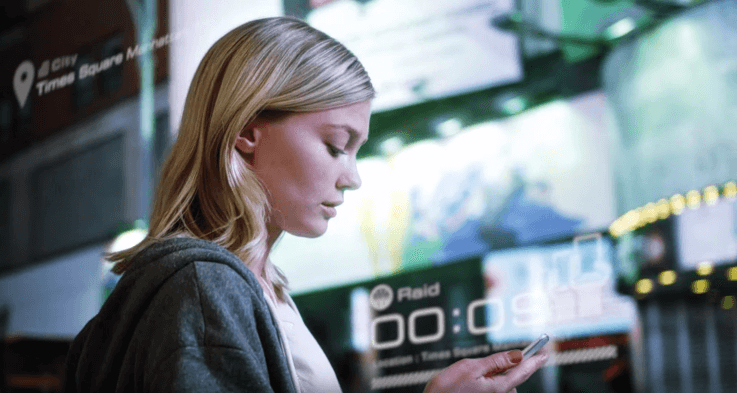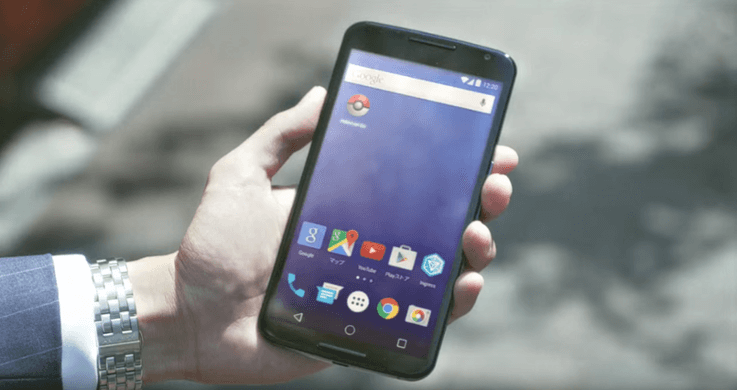POKÉMON Go is all the latest craze, but it might change how we view future mobile marketing…
This past July, Niantic – a company that used to be part of Google – released the (literally) game-changing app called, Pokémon Go. It quickly became a phenomenon with people spending more time catching virtual creatures than they did on either Facebook or Snapchat (which is why we started noticing).

For many, the introduction of the app wasn’t surprising. Its use of augmented reality – or AR – wasn’t unique. AR has been around for quite some time, though it was usually only accessible to those with huge systems that could handle the amount of data it took to superimpose images, like the NFL with their slow-motion replays and first down line.
So, what is augmented reality?
AR works by enhancing reality with virtual objects in real-time that are overlaid on top of video or a picture. The popularity of Pokémon Go can be traced to a specific device that allows access to AR: smartphones. iOS and Android operating systems have become complex enough to overlay the information. Those systems combine with better network and internet access to deliver the data from Google, Wikipedia, Facebook or wherever.
What does this mean for your business?
The use of augmented reality as a marketing tool will only grow as people become more interested in games like Pokémon Go.
Consumer response to AR has been steadily increasing for the past few years. According to tech company Hidden Creative, a buyer is 135% more likely to buy a product when they see an AR version of it. People like to see and interact with things before they buy them, which is what makes AR such a great tool for selling services as well.
The simplest way to incorporate AR into a marketing plan is by adding it to a print product such as an ad, business card or pamphlet

Layar, for instance, started in 2009, incorporating AR in print ads for brands such as Pepsi, General Mills, and BMW. Their AR embeds content into an interactive layer that unlocks when someone uses the app and scans the image or product. The user gets quick access to the brand’s website, video content, calls-to-action, and anything else the brand wishes to embed.
There are limits to the Layar layer, however, and those limits were challenged by Pokémon Go’s mobility. The problem with Layar is that you need to have a physical image or product to scan in order to unlock the content. While this can work really well if you have the layer on a business card or pamphlet, how can you capitalize on AR that will bring in potential clients and wow your current ones?
One way is by incorporating features that SnapShop Showroom and Augment have been using to bring 3D objects into people’s homes. SnapShop uses a static picture as the backdrop for furniture that users can place in various combinations. You can add and subtract pieces, and even get information like prices, dimensions, and features. The options are limited to what SnapShop has in their inventory, but you can get an idea as to what will look good in a specific space and begin to make design decisions.
Augment takes things to another level because their software is specifically designed to help businesses.

In addition to interactive print, they allow you to upload 3D images to their app from model-making applications such as Sketchup and Cinema 4D. This opens up the ability to add your products to show clients. The limits to what you can do with their app depends on how much time and effort you spend navigating their features, but the more you dive in the more fun you’ll have with clients. 3D floorplans, virtual construction projects, and product placement are just a few ways you can add to the customer’s experience.
Tracking your clients can also become a way to increase your customer base. Imagine approaching a potential client and showing them that five or more of their neighbors have used your services by pulling up a map. This kind of tracking isn’t possible yet, although Layar and Yelp have similar features for looking at businesses using the camera and GPS. On the Yelp app, using Monocle allows a user to simply point their phone in a direction and see the businesses close to them (those in their database).
With AR the sky’s the limit and you can decide how much you want to incorporate it into your marketing plan.
The simplest way is using an app like Layar to drive more business to your website, Facebook page, or original content such as videos. However, if you’re feeling adventurous, you can begin to create immersive environments for your clients to appreciate your product or service. These environments allow you to show – rather than just tell – your client why your company and ideas are the best option for them.
Augmented reality is only going to get better and those who begin to explore its possibilities now will only benefit in the coming years. Experts predict that as smartphones and GPS capabilities improve, so will the AR that accompanies them.
Soon there could even be glasses that allow you to seamlessly enter this interactive environment.
If your business needs a boost in the latest digital and mobile marketing trends, give us a call!

0 Comments